![10-Best-Sources-of-Vegan-Protein[1]](https://thelifepilot.com/wp-content/uploads/2022/11/10-Best-Sources-of-Vegan-Protein1.jpg)
There are tons of pros to this new lifestyle choice, but the first question of nay-sayers and critics is often the same, “But where will you get your protein?” Strangely enough, no one seems to care much where you get your protein when it’s meat-based. But when it’s plant-based, suddenly there is a question crisis. Well, have no worries! Whether you are tired of carnivores taunting you with protein or just want to learn more options for your own vegan lifestyle, this list will tell you all you need to know!
Number One: Seitan
The name might sound naughty, but the taste and protein punch of Seitan has been popular with Vegetarians and Vegans alike!
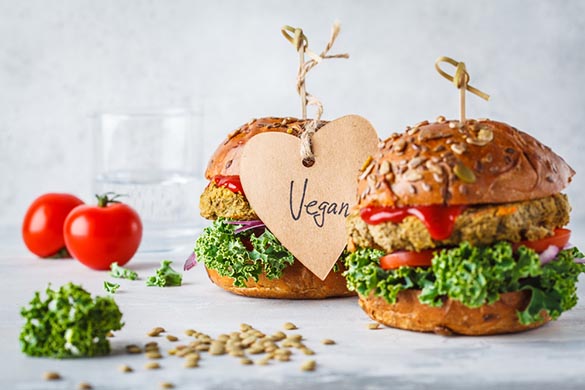
Seitan is a protein source made from gluten which, when cooked, mimics the look and texture of meat in many dishes. This makes it an incredibly popular choice for those who had formerly been carnivores and are now switching to Veganism, as it provides a familiar footing in what can feel like foreign territory.
One serving of Seitan is about 3.5 ounces and packs a whopping 25 grams of protein. That means Seitan has approximately 7 grams of protein per ounce.
Number Two: Soy
Edamame, Tofu, Tempeh and Soy Milk are different forms of this versatile legume.
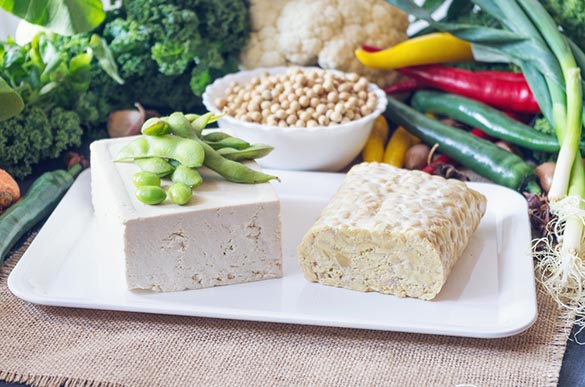
While it comes in all sorts of shapes and varieties, no matter the name, Soy is definitely a huge part of the meat-free lifestyle. If Edamame is your go-to, they try them boiled and salted or tossed in with salads, or as a crunchy addition to a veggie stir-fry! Another popular form of soy is the pressed curd form, also known as Tofu. Most people see Tofu as bland, when really it’s a flavor bomb waiting to happen since it takes the taste of anything it’s paired with. Tempeh is a very similar product, but it has a slight nuttiness which makes it better for some applications than others. But vegan burger alternatives all the way to soups and even desserts with the speedily growing popularity of soy milk.
For a 3.5 ounce serving of Soy, you will get 10-19 grams of protein. This means, depending on preparations and additional ingredients, Soy can have nearly 5.5 grams of protein per ounce.
Number Three: Lentils
If you’ve ever eaten Mediterranean or West Asian cuisine, you’ve likely sampled this tasty seed.
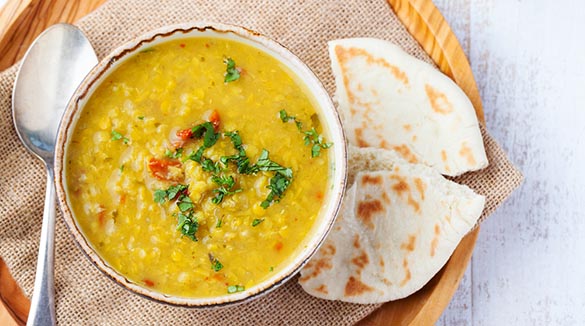
In their home country of the Indian subcontinent, lentils are a culinary staple and everyday foot. They haven’t gained such a massive rise in popularity in the Western world, but are gradually beginning to earn a following thanks to their versatility and deliciousness. These seeds can require a longer cooking time depending on size and whether or not they have their husks intact. But once prepared through your method of choice- soaked, sprouted, boiled, fried, baked – they can also be ground into a thick puree. This makes a fantastic addition to several different dishes like Dai tadka, a traditional Lentil soup, or it can be fermented and incorporated into a vegan bread.
A standard 3.5 ounce serving of pink lentils has 26 grams of protein, which works out to almost 7.5 grams of protein per ounce! That’s a protein powerhouse if we have ever seen one, but remember, certain cooking methods and different varieties can affect the final protein content.
Number Four: Beans
Whether pinto, black, kidney, or garbanzos, beans are protein powerhouses.
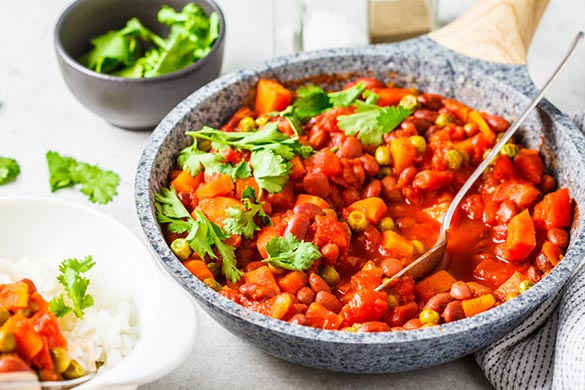
This category also includes the misnomer, Chickpeas, which are also technically beans. Garbanzo beans, to be precise. There are so many different varieties of beans that you could try another one every night of the week and not run out for a good month or maybe two. Beans are just another name for pod-born seeds, like Lentils or Soy. All beans are distantly related cousins from a flowering plant family, so they share a lot of nutritional value, and can be interchanged readily in most recipes.
A standard 3.5 ounce serving of pink lentils has 9 grams of protein which is 27% of your standard daily need. But that’s not all these little gems can do! They also include a complete compendium of vitamins and minerals for a healthy tummy.
Number Five : Nutritional Yeast
This one isn’t a standalone food, but instead a condiment you can add to almost anything!
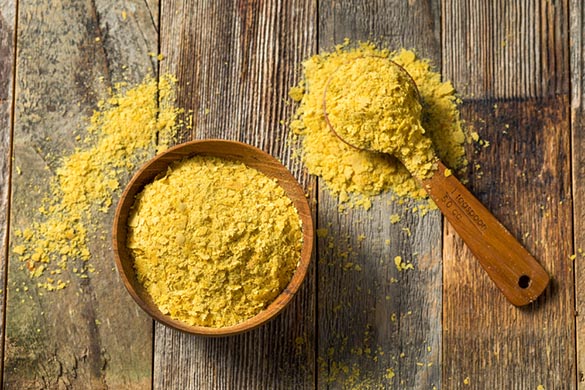
This unique strain of yeast called Saccharomyces Cerevisiae, and it’s sold commercially as a food product and dietary supplement. It has a slight cheesy taste, but is entirely plant-based and vegan, making it incredibly popular as a topping. Mashed potatoes, scrambled tofu, popcorn, even shaved on top of pasta.
A serving of this, however, is far less than the standard thus far. One serving of Nutritional Yeast is a single ounce, which clocks a whole 28 grams of protein. Not only does this have the most protein per ounce on our list, but is additionally fortified with several necessary vitamins.
Number Six: Grains
Fancy toasts are not exclusive to meat-eaters.
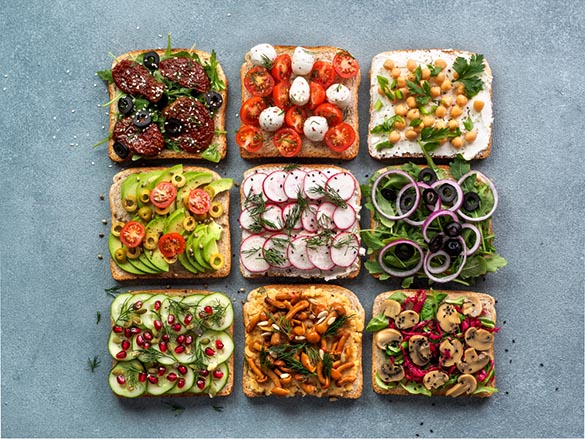
Grains by themselves are an excellent protein source, and when baked into an everyday staple, it’s an excellent way to ensure you get enough protein without even having to think about it. Spelt and Teff are two ancient grains which make particularly great substitutes for low-protein varieties like wheat and rice, respectively. Or, if you want a gluten-free option, there are pseudocereals like Amaranth and Quinoa. Then there’s Ezekiel Bread from sprouted grains like wheat, millet, barley, and spelt (even soybeans or lentils, too). The choices are endless, and there is undoubtedly one that fits your needs perfectly.
Spelt and Teff, if cooked into a wheat or rice substitute, can yield up to 10 grams of protein per one-cup serving. Bread serving sizes are per slice, and they contain about 8 grams of protein each, far more than the average bread.
Number Seven: Hempseed
Seeds of the Cannabis sativa plant won’t get you high, but they are very high in protein!
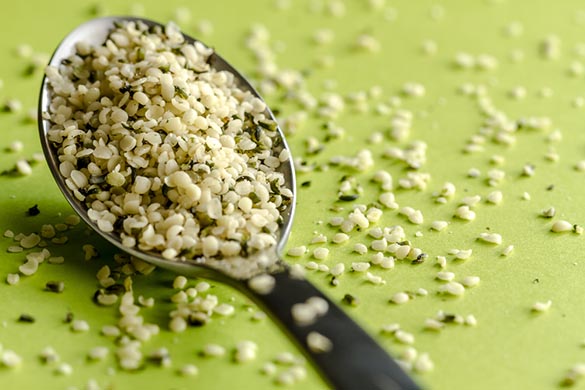
Though it isn’t as popular as other plant seeds, hempseed is widely available and very easy to digest. It provides 10 grams of complete protein per ounce, which is more than an equal amount of chia and flaxseeds combined. We need to end the stigma behind this health seed and start taking advantage of the plethora of benefits, from an abundance of protein to ideal levels of omega-3 and omega-6 fatty acids. Most often, hempseed is sprinkled on top of salads or made into a homemade dressing. They’re also delectable in smoothies!
Number Eight: Peas
The easiest and tastiest side dish ever invented, right?
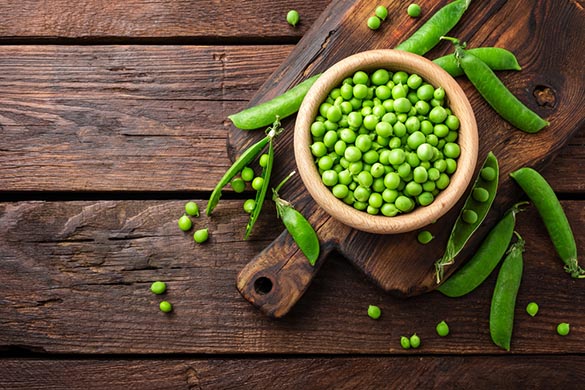
While these little edible emeralds aren’t as protein-packed as some others on this list, they are still an excellent addition to any kitchen, but especially a vegan one! It’s the flurry of side benefits that peas bring to the party which earn it a place on this list. Just one serving provides almost a quarter of your daily needs for fiber, Vitamins A, C, K, thiamine, folate, and manganese, but don’t stop they. Peas also bring to the party extra iron, magnesium, zinc, copper, and other B vitamins. For a new twist, try pea and basil stuffed ravioli, or toss a handful into your next bowl of guacamole.
These green goodies give 9 grams of protein per one-cup serving.
Number Nine: Spirulina
This blue-green beauty is a nutritional wonder you need in your life!
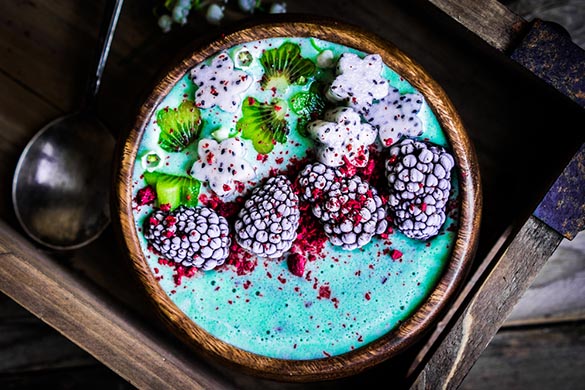
The natural hue of this algae is a stunning shade of teal, which it imparts to anything it is added to. But the color is far from the only reason to mix this into your morning smoothie bowl. Two tablespoons of this (in powdered form) adds an astonishing 8 grams of protein, plus a quarter of your iron and copper needs. One of the pigments that creates the beautiful color of Spirulina is currently being studied for its antioxidant and anti-inflammatory properties, and researchers say it may even have anti-cancer properties as well.
Number Ten: Oats & Oatmeal
Cold cereal gets all the credit, but nothing is more satisfying than a toasty bowl of oatmeal on a chilly morning.
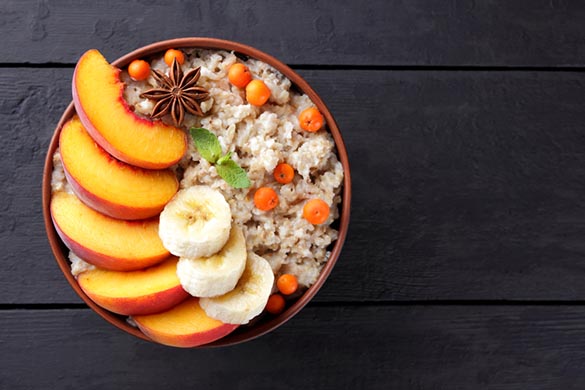
A cup of oats is 12 grams of protein as well as a fair amount of zinc, folate, and magnesium. While oats aren’t a complete protein, they offer much higher-quality protein versus rice or wheat. They are fantastic for cooking too, from acting as a neutral binder in veggie burgers to any number of sweet dessert concoctions!






